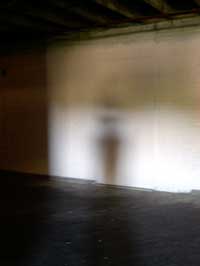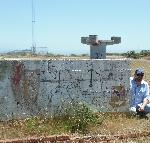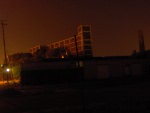 |
 |
|
UER Store
|
|
sweet UER decals:

|
 |
 |
|
Activity
|
|
782 online
Server Time:
2024-05-11 14:08:09
|
|
 |
 medoug
 
Location: Dubuque, IA area
Gender: Male
 | |  | Re: 4000 sq.ft. 1960's nuclear fallout shelter
<Reply # 40 on 8/18/2011 12:49 AM >
|  | | | Posted by medoug
"At one time, sand from the St. Peter was mined at Clayton, Iowa. The early excavation, commencing in 1878, were open-pit operations. In 1959, underground mining was initiated."
"Silica mining has been through two different stages. An open-pit quarry operated from 1878 until the 1930s. Underground mining using the “room and pillar” method began in 1916. "
|
It seems like there's some discrepancy between my 2 source with reguard to when the underground mining was started. Therrin, do you have any information that can confirm which date above is correct?
[last edit 8/18/2011 12:50 AM by medoug - edited 1 times]
|
|
Therrin
    
This member has been banned. See the banlist for more information.
Location: North of Chicago, IL
Gender: Male

*Therrin puts on the penguin-suit
 | |  | |  | Re: 4000 sq.ft. 1960's nuclear fallout shelter
<Reply # 41 on 8/18/2011 1:53 AM >
|  | | | I can look into it for you. I'll let you know what I dig up. (hehe)
Wouldn't overly surprise me though if they were having moisture issues. If they were even near, let alone below the water table, they're asking for issues, as well as other humidity factors and the type of rock. Lots of stuff to consider. But yeah I'll look it up.
Give a person a match and they'll be warm for a minute, but light them on fire and they'll be warm for the rest of their life. =) |
|
Freak
     
Location: Usually Alaska, now MSP.
Gender: Male

Hypocrite
 | |  | |  | Re: 4000 sq.ft. 1960's nuclear fallout shelter
<Reply # 42 on 8/18/2011 5:09 PM >
|  | | | St. Peter Sandstone is fairly moisture-sensitive, it holds together better when it's slightly damp. If it's too dry, it tends to collapse (kids have been killed by starting campfires under sandstone overhangs, when the ceiling dries out it falls on them). If there's too MUCH water, then the sand erodes and washes away (the Twin Cities has this problem with drains, if a hole forms in the wall of a deep drain, there will soon be a new cave washed out around it).
I'm curious how the Clayton mine protects against collapse, if they're drying the passages. Some folks tried using a local mine here as storage, but the moisture content caused a lot of mold and mildew problems. Are the walls lined somehow?
I've been to a mine almost identical to Clayton that still had some Civil Defense supplies. There was one area with tons of water barrels. Somewhat nearby, there's a private fallout shelter constructed from a former highway bridge. The road got re-aligned in the 50s, and someone bought the old section of highway and underpass, blocked it off, and installed cots and supplies. The cots and a stove are still in there. They dug a ditch around it so the water would still have somewhere to go.
Threadjack continues... 
Oh, and somewhat on topic, does anyone have info on AT&T Long Lines hardened bunkers? Whenever I see one of those old horn-style towers I wonder if it has a hardened site under it 
Turn off the internet and go play outside.
http://spamusement...hp/comics/view/137 |
|
medoug
 
Location: Dubuque, IA area
Gender: Male
 | |  | Re: 4000 sq.ft. 1960's nuclear fallout shelter
<Reply # 43 on 8/18/2011 10:48 PM >
|  | | | Posted by Freak
Oh, and somewhat on topic, does anyone have info on AT&T Long Lines hardened bunkers? Whenever I see one of those old horn-style towers I wonder if it has a hardened site under it 
|
Check out this:
http://www.coldwar...land2/finland2.htm
Also, if you go to the root address, they supposedly have maps of locations to download, but I got a blank screen when clicking on the "maps" link.
|
|
ohok


 | |  | Re: 4000 sq.ft. 1960's nuclear fallout shelter
<Reply # 44 on 8/19/2011 8:01 PM >
|  | | | I don't understand the hooks for barring the door. If anyone might have an explanation I would welcome it. I would worry about anyone who only thought about themselves, first to the site and once in barring the door. Personally I would have a hard time turning anyone away who needed to get in.
|
|
Therrin
    
This member has been banned. See the banlist for more information.
Location: North of Chicago, IL
Gender: Male

*Therrin puts on the penguin-suit
 | |  | |  | Re: 4000 sq.ft. 1960's nuclear fallout shelter
<Reply # 45 on 8/20/2011 5:08 AM >
|  | | | Posted by ohok
I don't understand the hooks for barring the door. If anyone might have an explanation I would welcome it. I would worry about anyone who only thought about themselves, first to the site and once in barring the door. Personally I would have a hard time turning anyone away who needed to get in.
|
Think it through, in a true emergency situation.... along with all the people who might show up if they knew you had a shelter. Also think of the people who might show up BECAUSE they know you have a "well stocked" shelter, and who might have no regard for YOUR life at all, and then double think whether you might feel like turning anyone away or not.
Allowing deadly overcrowding, or allowing people to enter and take over control, don't really do YOU a whole lot of good, if you have the power to avoid it.
Thread officially hijacked.
(I just got back from a 2 day trip, I'll dig into that other info soon here)
Give a person a match and they'll be warm for a minute, but light them on fire and they'll be warm for the rest of their life. =) |
|
junkyard
  
Location: LaCrosse, WI
Gender: Male

Strategic Beer Command where the metal hits the meat.
 | |  | |  | Re: 4000 sq.ft. 1960's nuclear fallout shelter
<Reply # 46 on 8/20/2011 3:05 PM >
|  | | | First off I want to say the Command is impressed with the find! On the comms site at MS 40, it was not part of the original NIKE site. The building was, but it was used during the first Gulf war to link troops with their families back home. The transceiver was added long after the missiles were gone.
I drink gasoline for breakfeast and beer for dinner!
Any problem can be licked with a case of beer and a few sticks of dynamite.
Strategic Beer Command ruling the desert since 1995 http://www.strategic-beer-command.com |
|
Therrin
    
This member has been banned. See the banlist for more information.
Location: North of Chicago, IL
Gender: Male

*Therrin puts on the penguin-suit
 | |  | |  | Re: 4000 sq.ft. 1960's nuclear fallout shelter
<Reply # 47 on 8/20/2011 4:21 PM >
|  | | | Ok, so that mine is listed on the civil defense contractors mine storage locations documents as:
Stand. Loc. 0004 Martin-Marietta Co. Mine 1 1/2 mi. S of Clayton
Spaces: 44,016 Stocking: 44,016
Martin-Marietta was the mine's owners at the time, and is now a large Aggregates company based out of North Carolina.
Oh, Freak, to answer your question. They often use a technique called Room & Pillar or "pillar in place" for supporting the ceilings in those kinds of mines. Typically an engineering company which is familiar with that kind of geology will set up plans ahead of time to decide how large pillars need to be. Ore is mined out from the stopes or stope-in-drifts and pillars of the native material are left in place to naturally support the ceiling. If secondary stabilization is required in softer areas, they will scale the ceiling flat using a machine, then install ceiling bolts and wire netting to secure the softer ceiling sections to the parent rock above.
Travelling groundwater is diverted into ditches or drainage pipes and is pumped out, though it's usually diverted into a sump area below the level of work, and pumped from there. They typically aren't drying out all the surrounding strata, just diverting water they encounter so that it doesn't interfere with the mining process. As they come across open crevices, fractures in the rock, and voids which will retain large amounts of groundwater; there is the possibility that the amount of water pouring into a drift can overwhelm the ability to route it and pump it out. If plugging it isn't an option, and it's not able to be worked around, they may close that entire level and / or try to work around that area. Sometimes they will encounter a void of such proportion that it causes massive flooding, and the only safe result is to completely close the mine from that level.
Realistically, by channeling and removing groundwater, they aren't actually fully drying out the surrounding area.
Hope that helps explain things a little, hit me up on PM if you've got more extensive questions, or we can start a thread on it.
Here's an exerpt I came across which relates to the mine's civil defense history,
Pattison noted that since 1878, there have been three separate silica sand mine operations in the Clayton area.
The first, an open pit quarry started by William Buhlman in 1878, changed hands several times before closing in the 1930s. The second, under the management of Richard Kolch, made brick and tile from the silica sand at Clayton from 1919 to 1929. The present mine operation was started by John Langworthy in 1916, and was purchased by the Martin-Marietta Corporation in 1959. In 1983, Pattison Bros. purchased the mine and started to store fertilizer and other bulk commodities in the vast underground acreage of the existing mine.
The mine has 14 miles of tunnels and currently provides, in total capacity, 60 acres of underground storage area. The mine runs horizontally into the river bluffs for 2,300 feet and also runs parallel to the river for 3,200 feet. It is approximately 250 feet from the surface in some areas.
During the early 1960s, mine officials faced a situation unrelated to mining. At that time, people throughout the United States were intensely concerned about the possibility of a nuclear attack. The federal government responded by designating certain areas as civil defense shelters. The Clayton Mine was selected as a shelter site and 10 railroad cars and 10 semitrailers of food stuffs were placed in the mine, along with medical supplies, in the event of an attack.
The mine has a capacity for 44,000 persons whereas the entire population of Clayton County was about 18,000. The story is commonly told that since there was only one road to the mine, people were to drive to the mine, park their car, and enter the mine. The next person would push the first car into the river and park in its place. The civil defense director for Clayton County admitted that he did not know how that many people would ever get to the mine.
|

Oh, and to get things back on track, this is a great link for Civil Defense Museum. There is a lot of information on the old civil defense supplies, as well as locations and tours of old locations.
http://www.civilde...seum2/shelter.html
[last edit 8/20/2011 4:38 PM by Therrin - edited 1 times]
Give a person a match and they'll be warm for a minute, but light them on fire and they'll be warm for the rest of their life. =) |
|
medoug
 
Location: Dubuque, IA area
Gender: Male
 | |  | Re: 4000 sq.ft. 1960's nuclear fallout shelter
<Reply # 48 on 8/23/2011 10:19 PM >
|  | | | Posted by ohok
I don't understand the hooks for barring the door. ... I would worry about anyone who only thought about themselves, first to the site and once in barring the door. |
This really couldn't happen because the outer doors also had keylocks. You needed to have a key to even get to the heavier doors that had the bar hooks. Probably only the shelter owner, the shelter manager, and a few others who were already guaranteed a space would have the keys.
|
|
Therrin
    
This member has been banned. See the banlist for more information.
Location: North of Chicago, IL
Gender: Male

*Therrin puts on the penguin-suit
 | |  | |  | Re: 4000 sq.ft. 1960's nuclear fallout shelter
<Reply # 49 on 8/23/2011 10:25 PM >
|  | | | Seriously? If you knew the doors inside weren't barred, you'd let a KEY LOCK keep you out of a shelter full of supplies during a time of nuclear war???
More exceptional defense measures were put in place in most locations under the consideration that the greater majority of the criminal (or just very scared) populace wouldn't let a door lock keep them out.
Give a person a match and they'll be warm for a minute, but light them on fire and they'll be warm for the rest of their life. =) |
|
medoug
 
Location: Dubuque, IA area
Gender: Male
 | |  | Re: 4000 sq.ft. 1960's nuclear fallout shelter
<Reply # 50 on 8/23/2011 10:31 PM >
|  | | | OK, then how would you keep someone from doing as ohok mentioned? You spend several thousand dollars building and stocking a fallout shelter and then can't used it because some self-centered person bars you out of it. Of course a 6" thick wood barred door can be defeated with enough effort.
|
|
Therrin
    
This member has been banned. See the banlist for more information.
Location: North of Chicago, IL
Gender: Male

*Therrin puts on the penguin-suit
 | |  | |  | Re: 4000 sq.ft. 1960's nuclear fallout shelter
<Reply # 51 on 8/23/2011 11:04 PM >
|  | | | A 6" thick wooden door wouldn't repel successive rounds from a 12guage using slugs. Nor against an improvised battering ram.
Steel, the thicker the better, now you're talking.
Since these are PUBLIC shelters, they are of course intended to be easy access and open to "all"... likely with the exception of those who have ill-will in mind.
Although if you barred the access from the inside against a 6" multi-layer wooden door, it would do it's job much better than if it were merely locked with a key.
Are we talking about a purpose built shelter at this point, like the concrete one shown? Or at a mine location or other retrofitted or purpose built site?
A site built on existing private property but taking advantage of the fact of excellent radiation protection and space (like a mine) would not inherently disallow the private owner from adding beefed up defensive apparatus on his/her own.
Give a person a match and they'll be warm for a minute, but light them on fire and they'll be warm for the rest of their life. =) |
|
Stevenashville

Location: Nashville, Tennessee
Gender: Male
 | |  | Re: 4000 sq.ft. 1960's nuclear fallout shelter
<Reply # 52 on 8/24/2011 5:31 PM >
|  | | | [
Oh, and to get things back on track, this is a great link for Civil Defense Museum. There is a lot of information on the old civil defense supplies, as well as locations and tours of old locations.
[url=http://www.civildefensemuseum.com/cdmuseum2/shelter.html]http://www.civilde...seum2/ shelter.html[/url]
[/quote]
I absolutely love this site. Great link, Im going hunting for shelters for sure.
|
|
medoug
 
Location: Dubuque, IA area
Gender: Male
 | |  | Re: 4000 sq.ft. 1960's nuclear fallout shelter
<Reply # 53 on 8/24/2011 11:54 PM >
|  | | | Therrin,
Since you know a lot about shelters, I'm just wondering how unusual it was to have built a "dedicated" fallout shelter of this size? When researching on the internet, I found a lot of buildings that were either built with a shelter in the basement, pre-built buildings with the basement being designated as a shelter, and very small private dedicated shelters built, but really very few of this sort. The few that I did find of this scale seemed to be command centers of some type (military or communications). I'm pretty sure the shelter of this original posting was not any type of command center. So, how unusual was it then, and how unique is it now to be remaining standing?
Thanks,
medoug
|
|
Therrin
    
This member has been banned. See the banlist for more information.
Location: North of Chicago, IL
Gender: Male

*Therrin puts on the penguin-suit
 | |  | |  | Re: 4000 sq.ft. 1960's nuclear fallout shelter
<Reply # 54 on 8/25/2011 2:34 AM >
|  | | | Hmm... not strange that it's still standing, considering it's construction method. *that* may be a bit odd for the private citizen of that day. However, if it was truly built by some kind of a wealthy contractor or something like you originally mentioned, it would make more sense.
The "overbuild" of it for purely fallout protection isn't all that uncommon on a more general level though. While it's typically a bit more complicated and expensive to build a true "blast shelter", your optimum bet is always to overbuild a mere fallout shelter.
There is a lot of things about the factor level of the shelter, the amount of shielding material and the thickness and how that converts to the factor of protection in relation to radiation absorbed per hour/day/week/month/year vs. that of normal background radiation levels. And there are distinctly 3 different "groups" (or maybe it's 4, I'd have to look), as far as how much radiation is acceptable at which levels and for what amount of time. The progression into each higher category makes you more at risk for things like genetic mutation in DNA, sickness, and death.
Ugh, I'm having trouble refining down what I'm trying to say, there is so much information that is foundational to these concepts. The study of Dosimetry (not a physical "dosimeter", but the actual study of the rate and level of radiation of different types absorbed by the body) is both a somewhat clear-cut and a somewhat complicated subject. I could teach a class on this for a week easily.
I'll try to break it down.
In most fallout shelter locations, the level of protection varies depending of course on what type of weapon is used, how far you are from the blast, if MULTIPLE weapons have hit a single area, weather conditions (wind and rain), etc.
Normal background levels of radiation in the USA in the cold war era was right around 2/10th of a Roentgen (one of the units of scale for radiation).
During the time of fallout from a nuclear weapon, ESPECIALLY in the first few hours that fallout is coming down out of the sky, it will be thousands to tens of thousands of times greater, and measured in Roentgens(R) per HOUR, not per YEAR.
So you're talking about a "normal" dose of 2/10ths of R in a year vs. ~8,000 R in a single hour.
The probability of radiation exposure causing no permanent immediate damage and likely causing no lasting damage fits right around 0 to 50 R, over the whole body.
Radiation exposure is CUMULATIVE, and it also depends upon different areas of the body exposed, but for reasons of simplicity I'm gonna lay this out in terms of full body exposure.
0 - 50 R ~ No sickness / No lasting damage
50 - 200 R ~ Level 1, No immediate damage, 5% of ppl die after 60 or more.
200 - 450 R ~ Level 2, Immediate damage, <50% will die in 30 to 60 days.
450 - 600 R ~ Level 3, Immediate damage, >50% will die in 30 days.
>600R ~ Level 4, Immediate damage, 100% will die in 2 weeks or less.
>1000R ~ Level 5, Immediate damage, 100% will die in hours.
So, if outside there is say 10,000 R present each HOUR, that's an extremely deadly amount. If you get 2/10ths R / Year and live to be 100 you'll only cumulatively get 20R in your entire life.
Radioactive fallout is produced by the material of the bomb casing and any other physical matter which is produced by the explosion and throw high into the air. "Radioactive" particles are like dust, which settle back down out of the atmosphere but are now super-radiated particles which emit radiation. They can be swept off clothing the same way dirt can (depending on particle size, like dirt). There are different types but I'm not going into that here.
They will NOT "contaminate" something like water, in a storage container which is sealed, but they can settle into open water or food sources and become ingested, where they will sit in the body and continue to emit radiation from inside the body, which can be extremely hazardous.
Okay, so where we're going with this....
From the above you should realize that there is LOTS of this crap coming down as "fallout" (falling out of the air) after a nuclear attack or explosion. Also, as noted above the human body is only able to handle very low levels compared to what can be exposed.
As wind and other factors cause these particles to "pile up" at a location, the amount of radiation there will rise over a short period of time, though eventually the half-life of radioactive decay will lower the amount being put out. This is pretty basic stuff that most people seem to be familiar with.
THIS IS WHERE SHELTERS COME IN!
Okay so you have a shelter. But what it's made out of is what is crucially important at this point.
The materials a shelter uses are vital to figure the Protection Factor of the shelter.
You want the MOST DENSE material you can get. But density in thin layers gets to be very expensive!
A layer or wall of concrete 8" thick will cut down the radiation that penetrates it by a factor of 10.
I don't know what you guys know about the cost of materials, but pouring an 8" slab of concrete isn't very cheap. Depending on the size of the slab you could already be talking thousands of dollars.
And if there's 10,000 R (rate level) outside, and you've ONLY got 8" of concrete between it and you, you're still taking 1,000R in an hour, which would put you in category 5 above, which is DEAD in a few hours.
Material: Thickness: Protection Factor
Concrete 8" PF 10
Earth, packed 11.2" PF 10
Brick, red 11.2" PF 10
Glass 7.2" PF 10
Hard Wood 26.4" PF 10
Human Body 20" PF 10
Lead 1.6" PF 10
Books, News 24" PF 10
Steel 2.4" PF 10
Water 18.4" PF 10
Okay, so we can see that LEAD is one of the best shielding materials, right up there with steel.
But there was a war going on, and essential war materials were hard to come by; so people typically used CONCRETE, and DIRT to create the Protection Factor (PF) that they thought they'd need.
If you're thinking you might catch a peak of 10,000R at your site location, you need to reduce that down considerably. Using 8" of concrete + ~ 4ft of packed earth will get you down to an acceptable dosage. MORE PROTECTION IS ALWAYS BETTER!
The Seven-Ten Rule states that fallout of the same AGE (from the same blast) will reduce in intensity by 1/10th for every 7 units of age. So if the fallout from one explosion has stopped coming down by 5 hours after the explosion, and it's reading a RATE of 10,000R / Hr. Then in 7 hrs it will have dropped to 1,000R / Hr, and so on. But this formula only works for ONE explosion.
If you are being affected by fallout from multiple explosions, this will be impossible to calculate, as each new wave of fallout drifting in will change the cumulative "age" of the fallout.
Okay, I realize this is a really long post, but I want to make one more point, and this one is very important, and I hinted at it earlier.
Say the Protection factor cuts down your exposure rate to an acceptable levle, but you're STILL being exposed to some degree. Most in-city shelters will have better protected zones inside than others. A rule of thumb is that wherever you can see daylight is a poorly protected zone
(hence, lack of significant density of material between it and you. You'd need 3' to 4' of glass between you to cut it down to a safe level, or more)
And since you may have a shelter that's DESIGNED for 40 people, and it ends up holding 60 people or more, you can't necessarily fit all of the people into the "most" protected zones.
You then use "creative dosimetry". You literally rotate people in and out of different areas in order to "spread" the dosage out across everyone evenly between the higher exposure and lower exposure zones. This is a process that's too complex to cover in this post.
Children, pregnant women, and the elderly are more susceptible to radiation sickness than young, healthy adults.
So even in a well-protected area, these 3 types of people may be kept at the center of a group, to allow the sheer BODY DENSITY of the people around them to cut down their exposure rates.
There is quite a bit of thought that goes into shelter building, the protection factor of the shelter, and basic things like water, food, sanitation, monitoring equipment, people designated as Radiation Monitors who run that equipment and take readings and write down measurements and calculate group dosimetry and record each person's personal dosimetry, etc. So there is a LOT of information that goes into really knowing and understanding the topic of Dosimetry in a shelter.
The basic rule, GET AS MUCH DENSE MATERIAL BETWEEN YOU AND THE FALLOUT.
With everything I've written here, you should be MUCH more informed when you look at shelters and you think about all the variables that go into the construction of that shelter and its limits and what you can expect from it.
And if you have any specific questions, just ask =) There is also a ton of material on this subject available that you can download in PDF form. I have probably 50 or more manuals and research papers and Civil Defense documents on this topic.
Give a person a match and they'll be warm for a minute, but light them on fire and they'll be warm for the rest of their life. =) |
|
Therrin
    
This member has been banned. See the banlist for more information.
Location: North of Chicago, IL
Gender: Male

*Therrin puts on the penguin-suit
 | |  | |  | Re: 4000 sq.ft. 1960's nuclear fallout shelter
<Reply # 55 on 8/25/2011 2:43 AM >
|  | | | I forgot to mention 
A Dosimeter shows the DOSE of radiation recieved.
"Dosimeters" are a device that usually resemble a highlighter. You look through a little window in one end, at a scale on the other end which shows a measurement.
A Geiger Counter / Radiation Survey Meter shows the current RATE of radiation in an area.
Geiger counters of the Civil Defense variety usually have a top handle and look like a metal shoe-box underneath with a big round glass-faced meter on top. More modern Geiger counters / survey meters can be as small as a box of cigarettes, or even smaller, and can alert you in a variety of different ways when different RATES are reached. NukeAlert is KEYCHAIN sized, and costs about $160.
It alerts you in audible chirps, and has a chart on the unit to decipher the chirps. At different numbers of chirps, you're receiving a certain RATE of radiation (for example 500 mR / Hr, 1 R / Hr, 10 R / Hr, etc)
Dosimeters show how much you have absorbed OVER TIME, Geiger counters show what the CURRENT RATE of exposure is wherever the survey meter takes it's measurement from.
Some Geiger counters have a detachable probe which can be left outside and you take the readings from a safe area inside. Some take the reading right at the front/side/bottom of the unit.
Do not confuse the difference in the readings these two devices take.
With creative dosimetry, you can use ONE of these devices to calculate the other, but if you had to choose only ONE of these devices, I'd choose the Geiger counter over the Dosimeter.
Give a person a match and they'll be warm for a minute, but light them on fire and they'll be warm for the rest of their life. =) |
|
MIM-14
  
Location: Texas
Gender: Male

 | |  | Re: 4000 sq.ft. 1960's nuclear fallout shelter
<Reply # 56 on 8/26/2011 12:36 AM >
|  | | | Posted by /-/ooligan
Based on the number of IFCs & Admin areas I have explored and/or have seen the construction blueprints for, I'm comfortable stating that most CONUS Admin & IFC sites did not have purpose-built fallout shelters, and the few I have seen were pretty rudimentary and perhaps built at a later date & with non-appropriated funds.
/-/ooligan
|
Not to hijack this thread but, ooligan - there is a fallout shelter at Nike site DF-50 in Alvarado, TX. The one at the IFC site was destroyed but the one at the launch site still stands. It is thick concrete, and inside the original air filtration schematic was still in place which was fascinating to see. I can send you some photos if you'd like to see them. I'll be sure to check the DF-20L site for one when I visit it in the fall...
Nice find and photos by the way medoug, thanks for sharing.
[last edit 8/26/2011 12:37 AM by MIM-14 - edited 1 times]
|
|
ahhntzville
 
Location: Boston

 | |  | Re: 4000 sq.ft. 1960's nuclear fallout shelter
<Reply # 57 on 8/29/2011 6:34 PM >
|  | | | Very interesting, I really enjoyed your original post.
Posted by medoug
I'm relatively new here. I thought the way things worked is that you don't disclose the location of the place except on the UE DB, and access to that requires full membership. Am I correct?
|
There is a (much smaller) portion of the location database that is public. When you add a place to the database as a full member, you can choose whether or not to make it publicly visible.
If it's a sensitive and relatively vandalism-free spot, like this one appears to be, then I wouldn't post it even in the full-member-only database. UER doesn't like to admit it, but there are full members who are scrappers, security guards, cops, etc.
|
|
hairmetal1990
   
Location: Wisconsin USA
Gender: Male

roflcopter
 | |  | Re: 4000 sq.ft. 1960's nuclear fallout shelter
<Reply # 58 on 9/12/2011 9:34 AM >
|  | | | I'm curious as to where this is. I went to college in Morrison, Il, which is 20 minutes across the river from Clinton. So i'm pretty familar with the IL side of the river. I used to spend hours on google earth looking for signs of abandonement.
get the wunderwaffle!!!!! |
|
CatalogOfCulture
    
Location: All over the northeast
Gender: Male

 | |  | |  | Re: 4000 sq.ft. 1960's nuclear fallout shelter
<Reply # 59 on 9/13/2011 1:19 AM >
|  | | | Great write-up dude. Loved it.
If it rusts I will find it |
|
|
|
All content and images copyright © 2002-2024 UER.CA and respective creators. Graphical Design by Crossfire.
To contact webmaster, or click to email with problems or other questions about this site:
UER CONTACT
View Terms of Service |
View Privacy Policy |
Server colocation provided by Beanfield
This page was generated for you in 171 milliseconds. Since June 23, 2002, a total of 741364764 pages have been generated.
|
|


















